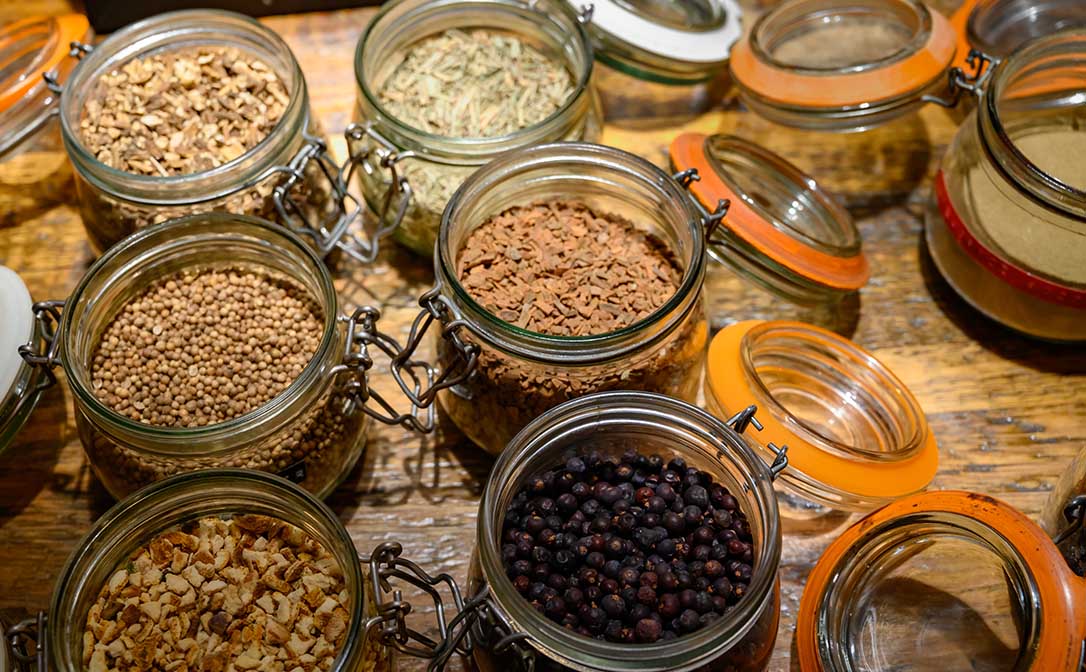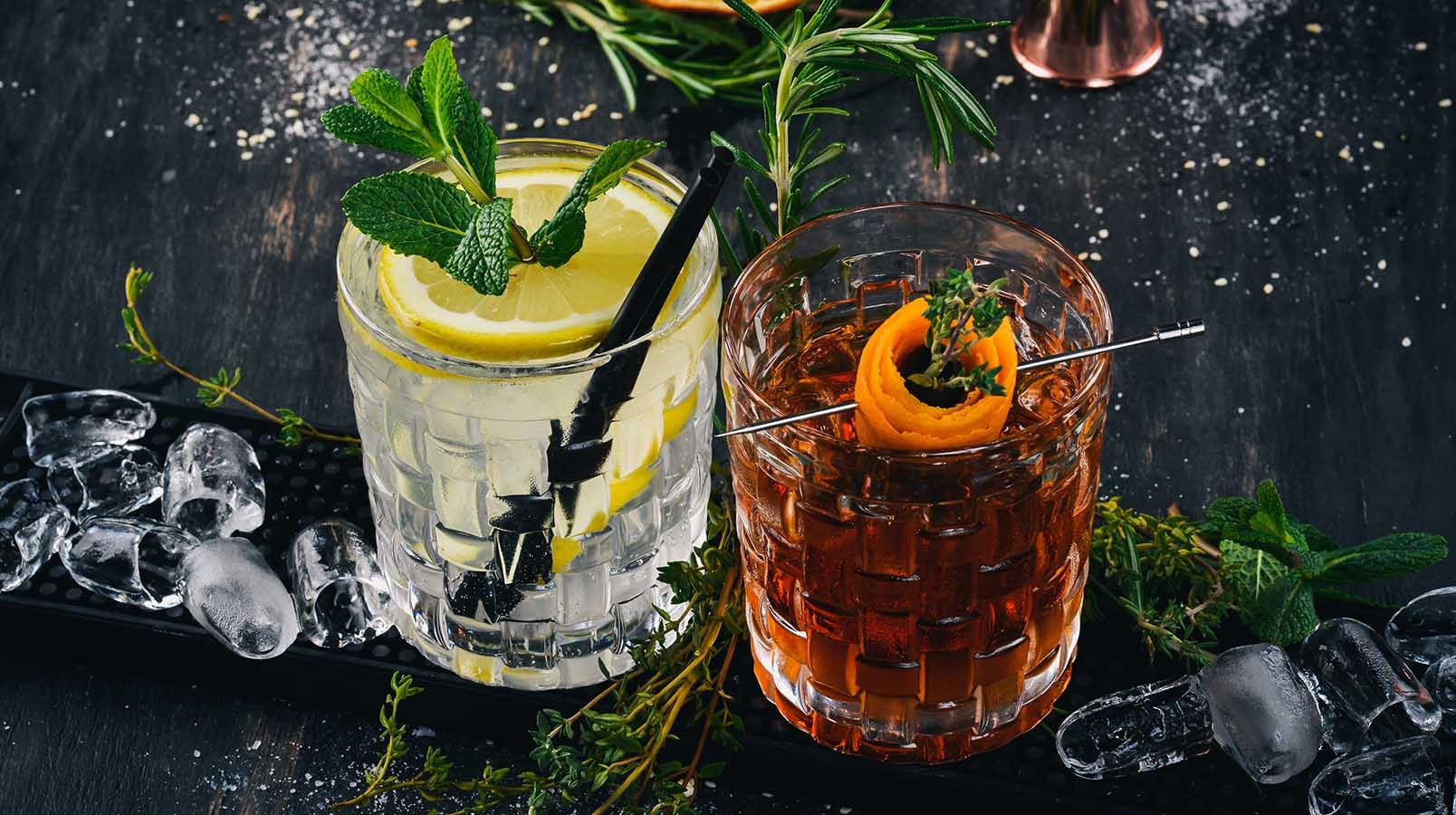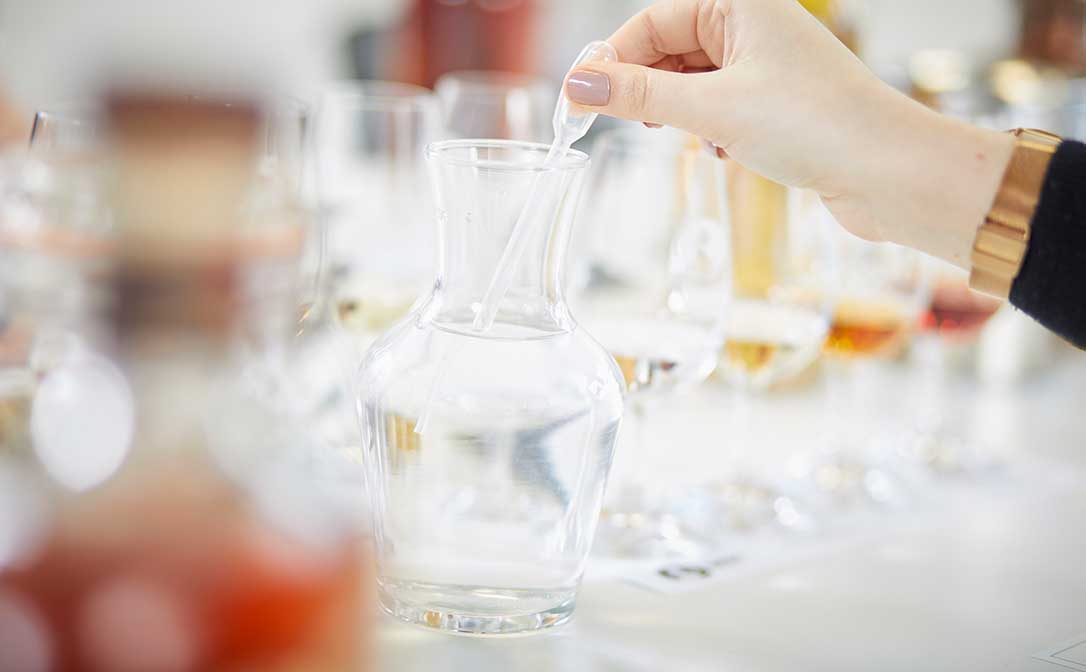World Gin Day is being celebrated on Saturday 10 June, so we asked our spirits educators to explain how the flavour of gin is affected by the way it’s produced. We also asked them for some tasting tips to best appreciate these flavour differences.
The influence of botanicals
The aromas in the best gins come from botanicals. Juniper must be used but beyond that there is no limit what a distiller can use so long as it is affordable and available. Here are some of the classic botanicals, which are found in many gins on the market today.
Juniper is the only botanical that must be included in gin by law. Juniper berries give gin its characterful and invigorating pine-like quality.
Coriander seeds are present in most gins. They add spicy notes and, depending on their source, sometimes peppery ones – such as ginger or sage.
Angelica root has a musky, earthy aroma - reminiscent of walking through a dry wood.
Citrus peels complement the other botanicals, adding a zesty complexity - whether lemon, lime, grapefruit, pomelo, bergamot, sweet orange or bitter orange.
Cinnamon, cassia bark and liquorice root are all sweeter botanicals which balance out more bitter, floral or earthy botanicals.

The recipe
Judging the exact proportions of each botanical is critical. Distillers work according to their own recipes and measure out their ingredients precisely. This level of detail ensures they can produce the same flavours in their gin batch after batch.
To distill the botanicals together or individually?
Distillers have traditionally added all of the botanicals into their pot still at the same time, but there are a growing number who distill their botanicals separately and then blend the individually flavoured spirits to create their gin. It is a matter of style and preference.
Distilling the botanicals together can create extra aromas in the still, something that is not possible if they are distilled individually. On the other hand, those who make individually flavoured spirits prefer the clarity of the individual flavours and the control they have during blending.
Location in the still
To extract flavour from their botanicals, a distiller places them in a pot still with a neutral spirit – the kind of spirit that creates vodka when diluted with water.
The location of botanicals in the still can have an important bearing on the style of the spirit, and there are two main choices:
1. The distiller can place the botanicals in the still with the spirit, they may even lets the botanicals macerate in the spirit for a few hours. The botanicals are boiled with the spirit to extract their flavour.
2. Alternatively, the botanicals are placed in trays high up in the still. Hot alcoholic vapours pass through the botanicals to extract their flavour. This technique is called vapour infusion and produces a lighter style of gin.
Cut points
The volatility of each aromatic substance in botanicals is different. As a result, they come off the still in a sequence, rather than all at once.
Distillers choose when to start and end the collection of liquid for bottling, allowing them to collect and concentrate different parts of the distilling liquid. Based on a classic gin recipe, the first compounds to come across are those from citrus peels. As these start to fade, juniper comes to the fore, followed by the spicy notes of coriander and finally the earthy notes of angelica and liquorice.
Tasting gin with WSET’s Systematic Approach to Tasting
There are now hundreds of gins available on the market. So how can we assess which are the best or, more importantly, which we personally prefer?
WSET’s Systematic Approach to Tasting Spirits guides you on how to taste in a logical and professional manner. It is designed to build your skills at identifying key aromas and flavours, complementing the knowledge learnt through WSET qualifications.
There are three key steps. We recommend that you write notes at each stage.
1. Appearance
Assess how the spirit appears in the glass. Is it clear or a bit hazy? What colour is it? Typically, gins should be clear and water-white. If there is any dullness, it could be faulty. Some unfiltered gins may go a little hazy when you add water, and this is okay.
If there is a slight lemon tone, this could be the result of ageing. While this is rare, some gins are aged in wood for a short period of time which gives some colour and flavour.
2. Nose
When nosing a spirit, there is no need to swirl the glass vigorously. Swirling will release a lot of alcohol and could give you quite an unpleasant shock. Sniff gently, and gradually try to build up a picture of the aromas – you won’t pick up everything in one go. How intense are the aromas? To be classified as a gin there must be distinct aromas of juniper, but the distiller is trying to create a balance of different aromas ranging from those that are bright and lifted to those that are more earthy and savoury.
There are many different aromas so take the time when identifying them and consider whether they are expressive or muted. The best gins have well-defined, expressive aromas.
Tip: Add a drop of water to the glass before you nose it to help release the aromas and soften the alcohol.
3. Palate
Take a sip and let the gin coat your mouth. While the gin is in your mouth, it’s important to consider two factors:
1. How does it taste?
2. How does it feel?
Most gins are dry. However, if the gin is labelled Old Tom, you can expect it to have been sweetened. The flavours, and their intensity, should be similar in your mouth as on the nose. But how does the gin feel? Ideally it will be slightly warming, smooth and mouth-coating. If it feels slightly burning or coarse, that’s normally not a good sign.
Next, assess the nature and length of the finish. How many flavours can you taste? How did they develop in the mouth? Did they linger after the first sip or disappear quickly? Gin complexity can vary but the very best gins have long, complex finishes.
Finally, look back at your notes and rate each gin you have tasted. Then use your notes to compare and decide on your personal favourites.
The best way to find your favourite gin is to try lots of varieties! Or, if you’d like to learn more about the impact of production on flavour, why not take a WSET spirits course online or in the classroom? Visit our Where to Study page to find the right course provider for you.
Written by Nicholas King, WSET Head of Product Development - Spirits, and Liam Scandrett, WSET Spirits Educator.



